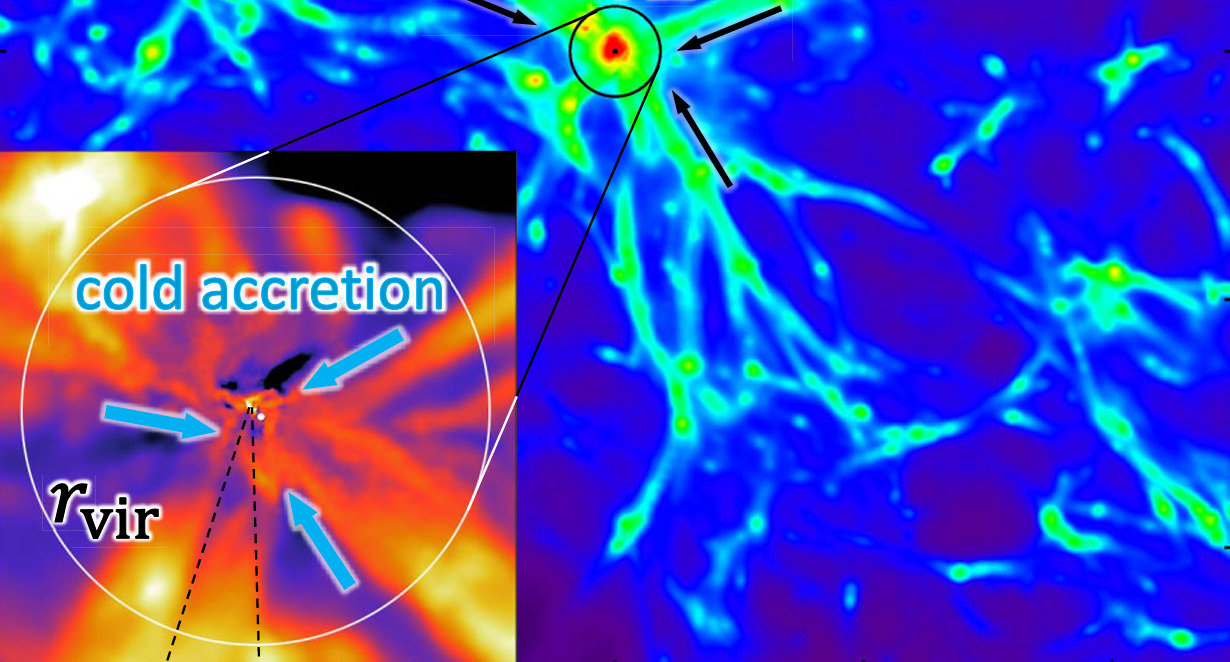Tsukuba Uchu Forum
155th Uchu Forum
Supermassive star and supermassive black-hole formation through accretinon on cosmological scales
Masaki Kiyuna
Tohoku University
Abstract
Supermassive black holes (SMBHs), with masses ranging from 10^6 to 10^10 solar masses (Msun), are known to exist ubiquitously at the centres of galaxies. How such massive objects formed remains a major open question in astrophysics. Recent observations with the James Webb Space Telescope (JWST) have revealed SMBHs with masses around 10^8 Msun as early as 500 million years after the Big Bang, further intensifying this challenge by requiring their rapid formation in the early universe. One promising hypothesis is that supermassive stars (SMSs) with masses of approximately 10^5 Msun formed under unique conditions in the early universe, which subsequently collapsed into black holes (BHs) and then grew into SMBHs through gas accretion. However, conventional theoretical models suggest that such SMS formation is only possible in rare, finely-tuned environments, making it difficult to account for the observed abundance of early SMBHs. In this work, we focus on the phenomenon of "cold accretion", which naturally arises during cosmic structure formation. We perform cosmological hydrodynamic simulations to investigate galaxy formation and the behaviour of cold accretion flows in the early universe. Our results demonstrate that cold accretion arises universally, and can efficiently transport gas to the halo centres. This process facilitates the formation of 10^5 Msun SMSs under much more common conditions than previously assumed. These findings suggest that the formation of BHs with 10^5Msun may have been a common process in the early universe, providing a viable pathway toward the rapid emergence of SMBHs. This work offers new insights into overcoming the so-called "SMBH formation problem" and highlights the importance of cold accretion in early cosmic environments.


 和 英
和 英